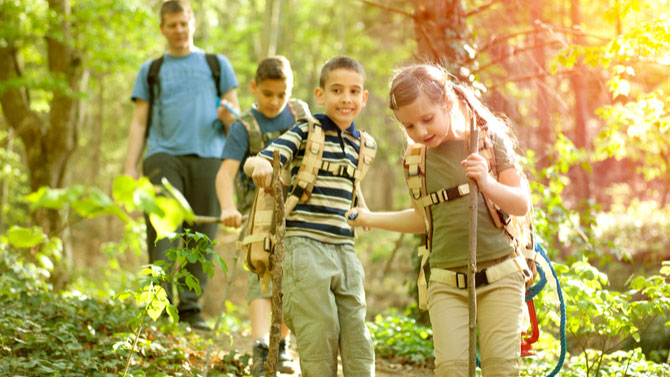Those of you who live in South Florida and have hiked other parts of the country know hiking Florida is quite different. Of course, whether you are a local or a visitor – hiking safety is an important consideration when hiking anywhere in United States – especially South Florida. To ensure you hike is most enjoyable, let’s discuss some special safety consideration for South Florida hiking.
Lost
Trails in Florida are often well blazed (marked), but in some areas plant life, which springs up quickly here, can conceal the blazes. If you get lost, don’t panic, just backtrack to the last blaze, and return to the trail. For safety, just in case, hike with a friend and leave your itinerary with someone who is staying home. It is always a good idea to carry along snacks, water, and a signaling device – like a whistle. And a map and compass never hurt!
Poison Plants
Poison ivy, poison oak, and poison sumac grow well in along Florida’s trails, as do some less familiar plants like poisonwood trees (a pretty little tree with yellow-orange fruits), stinging nettle (needle leaves with beautiful white flowers), and Florida Holly (featuring attractive bunches of berries). Before you hit the trail, check your field guide for references, and consider wearing long lightweight pants on your hike.
Bugs, Bugs, Bugs
You won’t be in Florida long before you realize the number of incredible insects who share the region. Mosquitos, ticks, chiggers, red ants, and spiders, oh my … all make their home along Florida’s trails. Knowing their habitats is half the battle – ticks love shady places, spiders typically attach their webs at eye level, ants are at ground level, and mosquitos love standing water. By wearing protective clothing, spraying on insect repellant, and carrying along mosquito netting you’ll be safe from most insects and their bites, but remember, after any hike, check yourself and your gear to ensure you didn’t bring home any unwanted guests.
Heat Exhaustion and Sunburn
Always a concern in Florida where temperatures are high, heat exhaustion is of special concern on summer hikes. Keep yourself hydrated. If you feel lightheaded, chilled, or nauseous – find a shady spot, stop, rest, drink water, and apply a wet bandana, towel, or shirt to your head.
Sunburn is of equal concern. Wear protective clothing or slather on sunscreen, wear a hat, keep a wet bandana or scarf around your neck, and stay hydrated. On the hottest days, consider hiking early in the day before the sun (and heat) hits its daytime peak.
Thunderstorms and Flooding
Thunderstorms in Florida are the stuff of legend. If you find yourself on the trail with a thunderstorm on the horizon, take cover in a low-lying area – a ditch or shrubby area and crouch down. Don’t take cover under a tree or picnic shelter. Flash flooding occurs after heavy rains, like those during thunderstorms, so take extra care once the storm subsides and you continue your hike.
Always check river levels with Park Rangers before planning a hike along the areas with rivers and swamps.
Wildlife
In all likelihood, you will see wildlife along hiking trails in Florida. Always be aware and enjoy the sighting, but never attempt to approach or feed any animal in the wild. Alligators are common, though rarely a threat to humans. In most cases they will move when they hear you coming. If not, give them plenty of space, and pass with care near the tail for safety. Bears are also fairly common, but will quickly move when it sees or hears you. The Florida Panther, while still endangered, is often spotted by hikers. Florida has four poisonous snakes – the cottonmouth, the rattlesnake, the southern copperhead, and the eastern coral snake – always give them plenty of room and respect.
Now you know about hiking safely in South Florida, so get out there and enjoy some of the most beautiful trails in the country!

